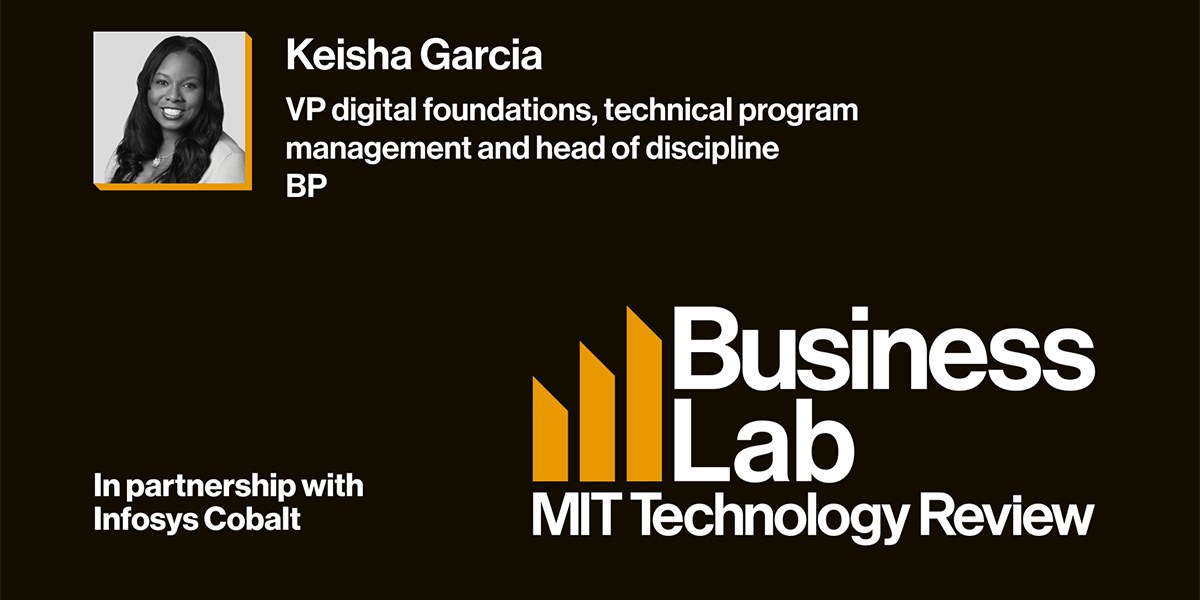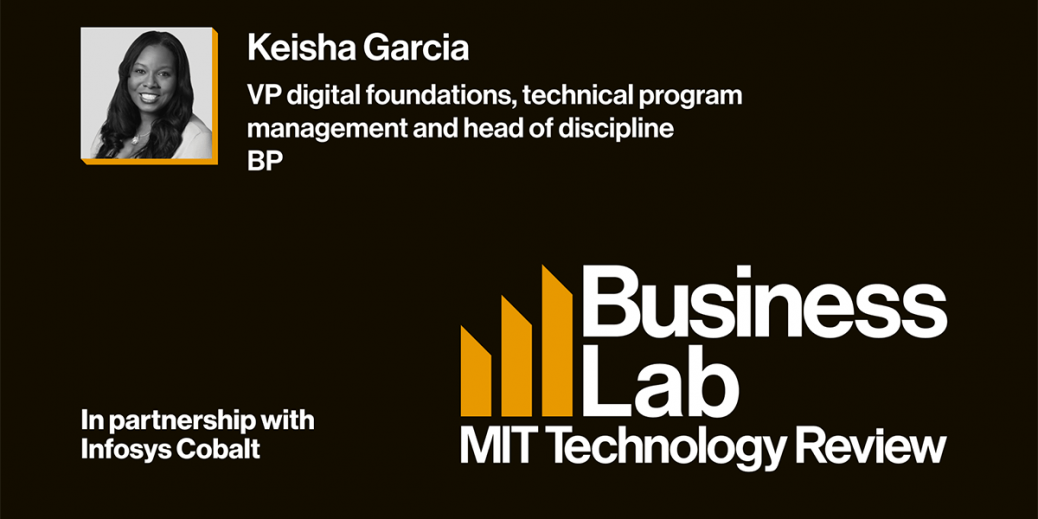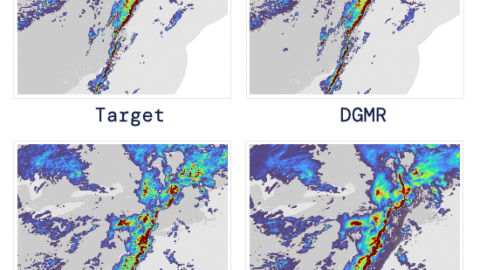
Laurel: Well, let’s start off. So, what has BP’s move to the cloud been like? From your perspectives, what are the major benefits and challenges with cloud transformation?
Keisha: Yeah, so our journey from my perspective has been exciting, it’s been complex, it’s been a learning journey all the while. And it’s been long. It’s been pretty long. Our journey started in 2013 and we were experimenting on cloud computing for email services and HR learning management systems. And then you fast-forward to 2016, and we were about 2% of our BP applications were on the cloud. As the company, we were conducting proof of concepts and determining what was the best approach and how do we do this at scale, large scale. In 2017, we adopted a cloud-first approach, meaning that anything that was any new hardware, any new system builds were going to be on the cloud, no more adding to our existing, at the time, eight mega data centers and over 107 different data centers throughout our regions throughout the world.
We had decided that we were no longer going to add anything, unless it was to the cloud. Or if it had to be on-prem, it had to be by exception only. And so that kind of motivated us to push along and got everybody along for the journey. But again, just getting all of our business and everyone else sold into the business or sold into cloud and cloud concepts and all of those things, given the fact that there were a lot of unknowns at the time, so working with just different vendor partners and trying to find as knowledgeable people as possible. So again, that just all fed to the complexity. By the close of 2022, we had gotten into our stride pretty well and had done quite a few, or a large part of our state, over 90% of our state, to be exact, we have migrated to our cloud environments, which enabled our faster product and service introduction and changing the BP digital operating model, which we’ve moved now to a product-led organization.
So our cloud migrations, I think some of the biggest benefits was it helped us optimize BP’s technology stack. Of course, it increased our operational resilience. It introduced new network and data architectures, accelerated our technology adoption, helped to push the modernizing of our state and keeping those evergreen, it also assisted in the reduction of our CO2 emissions from our data centers. However, migrating to the cloud at the scale that we’ve had to, as large as our landscape is, again, as I said, was challenging, complex, and extensive because we had extensive legacy IT estate. And as I said earlier on, just hosted in the eight large mega data centers throughout the US, as well as in Europe, and then also just the myriad of data centers that we have across our regions. So the challenge, I cannot overstate, it has been that, but the gains have been great.
Laurel: So that’s a great look at the past and the journey that BP has been on. So, what are some of the major cloud trends you’re seeing today?
Keisha: So some of the major trends that we’re seeing today from a platforms perspective, see increasing numbers of organizations looking to consolidate their business applications on the cloud-based platforms, be more cloud native, have robust data and analytics platforms as well that will allow both real-time and on-demand access to key business information. Again, as we said, we’ve moved to a product-led organization, so we’re seeing that, of course, there’s several companies that are doing the same. Digital teams are aligning to product-led operating models to ensure customer centricity and customer focus. And then also just putting that at the forefront. And then product development and enabling business and business-led prioritization and product delivery, which helps, again, with us aligning more to our business strategy. And given where we are going with moving to an integrated energy company and our transition with re:Invent, that has been huge for us.
There’s lots of markets that we’re tapping into, lots of things that we’re doing, and we have to get on board with the business to be able to be dynamic and be able to shift and be able to move, and to be able to provide a faster time to market with solutions. And so from that standpoint, being on a cloud platform, having all of the technology that’s available to us to do that at pace and align with our business has been awesome for us. And I’m seeing a lot more companies wanting to just share experiences and knowledge because they’re trying to do the same. Also, just the cloud native piece of that and cloud native enterprise is an organization that has aligned business and technology teams to help, again, modernize the estate, but we have to build more cloud native capability so that things can be more plug and play versus the huge build outs.
And then again, having to do a lot of the upgrading and all of the things that would come along with not building and being on top, or being with more in the cloud native state. Also, just again, part of our reinvention journey, this also enables climate action. We’re seeing a lot of folks that are moving towards doing the things that align with the Paris Agreement, as well as all of the things that we’re doing along re:Invent. So decarbonizing digital as assets directly impacts about 2% of the global energy consumption. So therefore, it helps. Every bit helps. And so therefore, those are the things that we’re seeing. And we’re also, of course, moving there in that space to also assist with us getting to net zero. There’s also just being able to be more of a connected world. So 2023, this year and beyond, promises, opportunities for large scale industrial 5G, broadband based IoT usage and catapult connections for remote regions.






Recent Comments